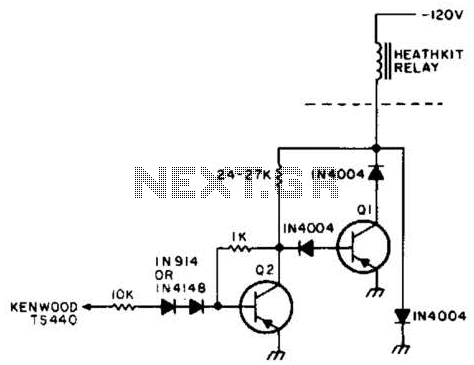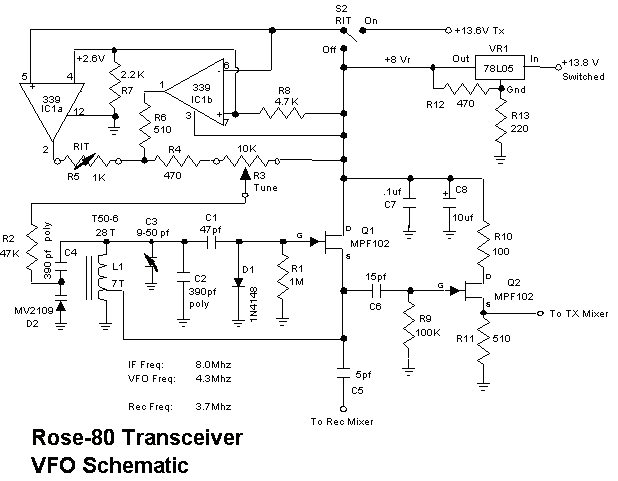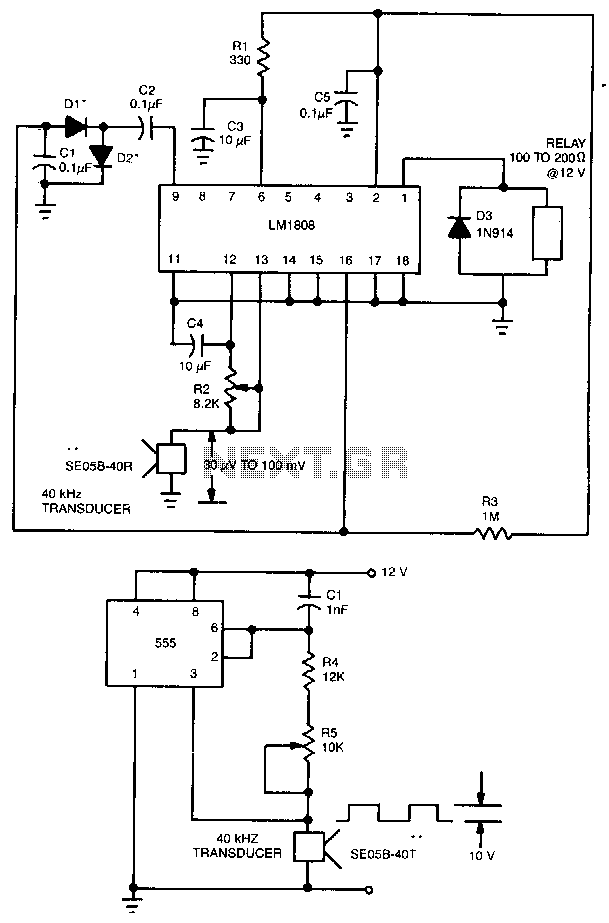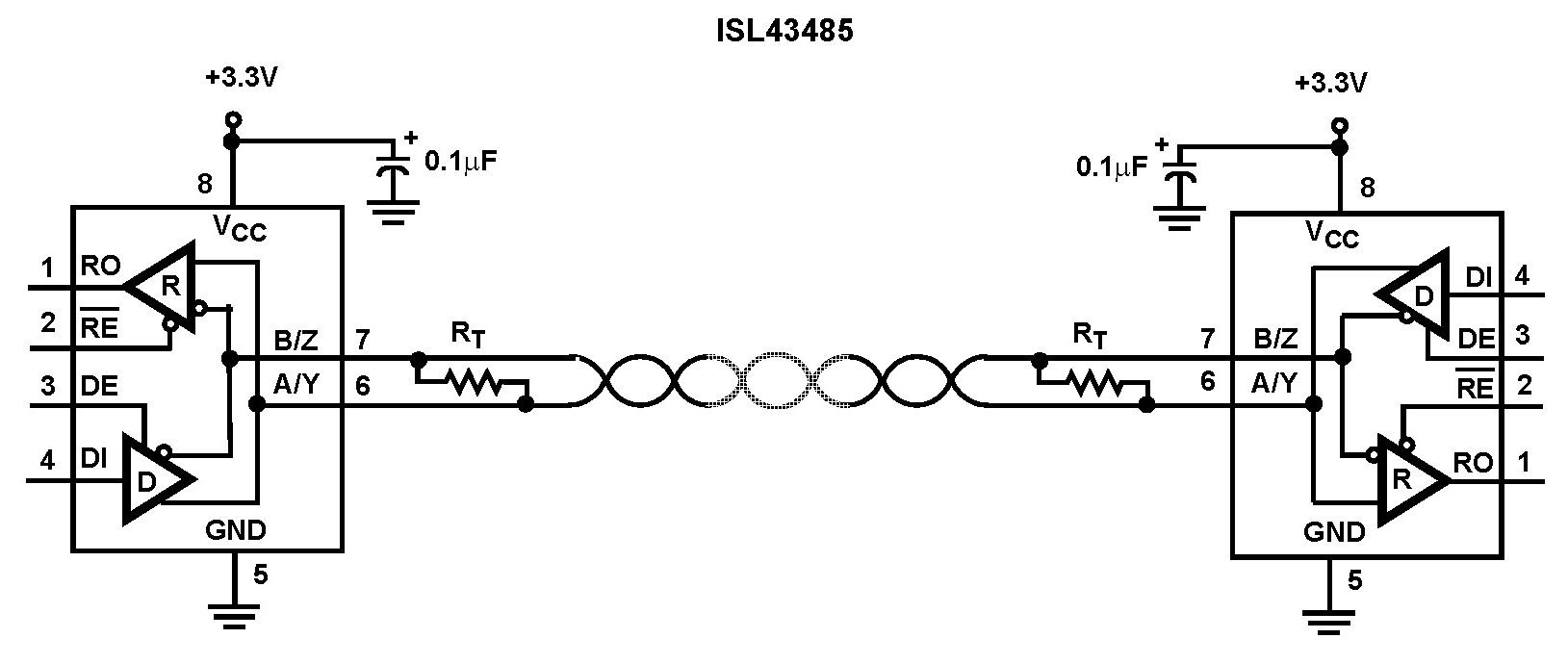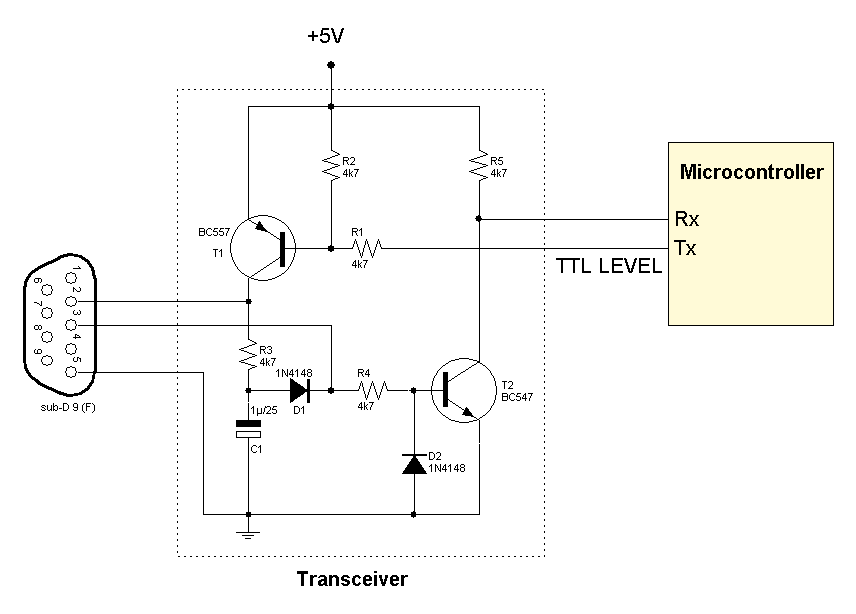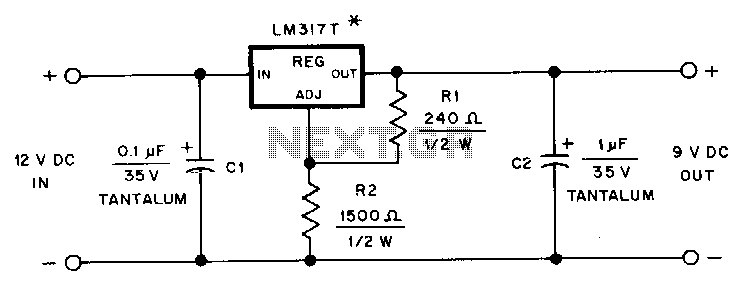
HF transceiver
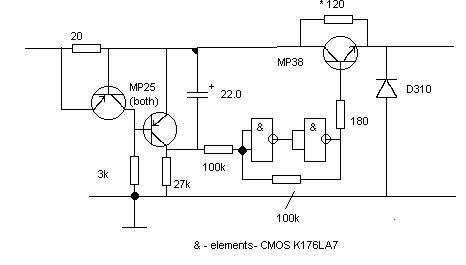
The choice of intermediate frequency (IF) is typically influenced by the availability of filters with the desired characteristics. For communication receivers or transceivers, the requirements for the main selective element are quite stringent, and two primary types of filters are commonly employed: electromechanical filters (operating in the range of approximately 200-500 kHz) and quartz crystal filters (operating in the range of approximately 5-9 MHz). However, when a low IF is utilized, the relative frequency difference between fundamental and mirror channels becomes minimal for input signals with frequencies greater than 4-5 MHz, making the necessary suppression of the mirror channel unattainable using standard resonant LC-band filters. Two fixed intermediate frequencies are typically used: the first in the range of about 3-8 MHz and the second around 465-500 kHz. In this configuration, the primary signal filtering occurs at the second IF. A variable first IF and a fixed second IF is a common arrangement for homebrewed transceivers, as it provides a significant advantage: the variable frequency oscillator (VFO) operates at relatively low frequencies and does not require band switching. However, this configuration results in all bands having the same width, which may not align with amateur radio frequency allocations, where the first IF is higher than the highest received frequency, for example, 35 MHz. This principle is utilized in many modern communication receivers, offering the benefit of eliminating the need for band-pass filters (BPF) for each band, as mirror frequencies fall outside the HF range and can be suppressed by a suitable non-switchable low-pass filter at the input. Nevertheless, this approach necessitates a high-frequency VFO, typically a digital frequency synthesizer, which can be challenging to construct at home. The described SSB/CW transceiver features two fixed intermediate frequencies: the first at 5.5 MHz and the second (main) at 500 kHz. This selection follows the UA1FA transceiver schematics. The main selective element is an electromechanical filter with a passing frequency range of 500.3-503 kHz (bandwidth = 2.7 kHz), which is well-suited for SSB operation. For CW operation, the frequency range is further narrowed in the audio amplifier. While CW enthusiasts may consider adding a separate IF filter for this mode, it may not be practical for beginners. Most amplification stages in both the RX and TX channels utilize MOSFETs due to their low noise, flat frequency response, and the ability to adjust gain remotely by varying the voltage on the second gate. This capability is employed in the automatic gain control (AGC) circuit and in RX/TX switching to disable the unused channel. The primary drawback of MOSFETs is their relatively high cost (especially in Russia) and their susceptibility to damage from static electricity. Band-pass filters for each band are switched by a bandswitch using small-sized electromagnetic relays. Each filter consists of two resonant LC circuits with connecting capacitors, which are selected to ensure a flat frequency response within the band (no tuning of the BPF occurs simultaneously with VFO tuning). There are four mixers (two in RX and two in TX), all identical and constructed using JFETs. The first IF filter features three identical resonant circuits with inductive coupling, sufficient to suppress mirror-channel signals for the second mixer. The variable frequency oscillator (VFO) includes an internal buffer amplifier. The VFO frequency is adjusted using a variable capacitor and switched via the bandswitch using electromagnetic relays. An external (second) buffer amplifier for the VFO has been deemed necessary, as its absence resulted in excessive influence from the transceiver's circuit on the VFO, leading to frequency deviations during transmission and unavoidable frequency "jumps."
The design of the described transceiver encompasses various critical elements that contribute to its performance and functionality. The selection of intermediate frequencies is a pivotal aspect, as it directly impacts the receiver's ability to filter out unwanted signals while maintaining the integrity of the desired signal. The use of electromechanical and quartz crystal filters allows for precise tuning and selectivity, essential in communication applications where clarity and reliability are paramount.
In the implementation of the variable first IF and fixed second IF configuration, the transceiver benefits from a simplified architecture that minimizes the need for complex switching mechanisms, thus enhancing operational reliability. The choice of MOSFETs in amplification stages is particularly advantageous due to their inherent characteristics, which allow for efficient signal processing and control. The integration of automatic gain control further optimizes the transceiver's performance in varying signal conditions, ensuring consistent output levels.
The band-pass filters and mixers are designed with careful consideration of the frequency response and signal integrity. The use of JFETs in the mixers provides low noise performance, which is crucial for maintaining signal quality during both reception and transmission. The design also emphasizes the importance of minimizing interference between channels, which is achieved through the careful selection of resonant circuits and the implementation of effective filtering techniques.
Overall, the described transceiver exemplifies a well-thought-out design that balances complexity with functionality, making it suitable for both amateur and professional communication applications. The attention to detail in the choice of components and the configuration of the circuit ensures that it meets the demanding requirements of modern communication systems.The choice of IF is usually determined from availability of filters with desired characteristics. For communication receiver or transceiver the requirements for main selective element are very high, and usually two types of filters are used: electromechanical (f~200-500kHz) and quartz crystal (f~5-9 MHz). But if low IF is used, the relative difference in frequency between fundamental and mirror channels becomes to small for input signals with F>4-5 MHz, and necessary suppression of mirror channel becomes unachievable by using common resonant LC-band-filters. two fixed intermediate frequencies, the first one in range about 3-8 MHz, and the second one - about 465-500 kHz.
In this case, main signal filtering occurs on the second IF. variable first IF and fixed second IF. This is very common variant for homebrewed transceiver, because it has following very important advantage: variable frequency oscillator (VFO) works on rather low frequencies and is not switched by bandswitch. However, in this case all bands have the same width, which doesn`t correspond with amateur radio frequencies first IF higher, then highest received frequency, for example 35 MHz.
This principle is used in many modern communication receivers. The advantage is, that no band-pass filters (BPF) are required for each band, because mirror frequencies are outside HF and can be suppressed by appropriate non-switchable low-pass filter at the input. But it requires high-frequency VFO (usually digital frequency synthesizer), which is difficult to make at home My SSB/CW transceiver, that i describe below, has 2 fixed intermediate frequencies, the first one is 5.
5 MHz, and the second (main) one is 500 kHz. This choice is not mine, i just followed the described UA1FA transceiver schematics. The main selective element is electromechanical filter with passing frequency range 500. 3-503 KHz (bandwidth=2. 7 KHz), which perfectly fits for an SSB operation. For the CW operation the frequency range is additionally narrowed in the audio amplifier. CW-lovers may wish to add separate IF filter for this mode, though it seems to me unreasonable, at least for the beginner. Most of amplification stages both in RX and TX channels use MOSFETs, because they have low noise, flat frequency response and ability to change gain remotely by changing the voltage on the second gate.
The latter is used in AGC (automatic gain control) circuit and also in RX/TX switching to close unused channel. The only disadvantage of MOSFETs is rather high price (at least, in Russia) and ease to damage by static electricity.
Band-pass-filters for each band, they are switched by bandswitch by small-sized electromagnetic relays. Each filter consist on two resonant LC-circuits with connecting capacitors, which are chosen to provide flat frequency response within the band (there is no tuning of BPF occurring simultaneously with VFO tuning).
Mixers with first IF filter. There are 4 mixers (two in RX, two - in TX). All of them are identical and are made using JFETs. First IF filter has 3 identical resonant circuits with inductive connection. It is enough to suppress mirror-channel signals for 2-nd mixer. Variable frequency oscillator (VFO) with internal buffer amplifier. The frequency of VFO is changed by variable capacitor and switched by bandswitch by electromagnetic relays. External (second) buffer amplifier for VFO. It appeared to be required, because without it the influence of transceiver`s circuit over VFO was too high, causing frequency deviation while transmitting and unavoidable `jumps
🔗 External reference
The design of the described transceiver encompasses various critical elements that contribute to its performance and functionality. The selection of intermediate frequencies is a pivotal aspect, as it directly impacts the receiver's ability to filter out unwanted signals while maintaining the integrity of the desired signal. The use of electromechanical and quartz crystal filters allows for precise tuning and selectivity, essential in communication applications where clarity and reliability are paramount.
In the implementation of the variable first IF and fixed second IF configuration, the transceiver benefits from a simplified architecture that minimizes the need for complex switching mechanisms, thus enhancing operational reliability. The choice of MOSFETs in amplification stages is particularly advantageous due to their inherent characteristics, which allow for efficient signal processing and control. The integration of automatic gain control further optimizes the transceiver's performance in varying signal conditions, ensuring consistent output levels.
The band-pass filters and mixers are designed with careful consideration of the frequency response and signal integrity. The use of JFETs in the mixers provides low noise performance, which is crucial for maintaining signal quality during both reception and transmission. The design also emphasizes the importance of minimizing interference between channels, which is achieved through the careful selection of resonant circuits and the implementation of effective filtering techniques.
Overall, the described transceiver exemplifies a well-thought-out design that balances complexity with functionality, making it suitable for both amateur and professional communication applications. The attention to detail in the choice of components and the configuration of the circuit ensures that it meets the demanding requirements of modern communication systems.The choice of IF is usually determined from availability of filters with desired characteristics. For communication receiver or transceiver the requirements for main selective element are very high, and usually two types of filters are used: electromechanical (f~200-500kHz) and quartz crystal (f~5-9 MHz). But if low IF is used, the relative difference in frequency between fundamental and mirror channels becomes to small for input signals with F>4-5 MHz, and necessary suppression of mirror channel becomes unachievable by using common resonant LC-band-filters. two fixed intermediate frequencies, the first one in range about 3-8 MHz, and the second one - about 465-500 kHz.
In this case, main signal filtering occurs on the second IF. variable first IF and fixed second IF. This is very common variant for homebrewed transceiver, because it has following very important advantage: variable frequency oscillator (VFO) works on rather low frequencies and is not switched by bandswitch. However, in this case all bands have the same width, which doesn`t correspond with amateur radio frequencies first IF higher, then highest received frequency, for example 35 MHz.
This principle is used in many modern communication receivers. The advantage is, that no band-pass filters (BPF) are required for each band, because mirror frequencies are outside HF and can be suppressed by appropriate non-switchable low-pass filter at the input. But it requires high-frequency VFO (usually digital frequency synthesizer), which is difficult to make at home My SSB/CW transceiver, that i describe below, has 2 fixed intermediate frequencies, the first one is 5.
5 MHz, and the second (main) one is 500 kHz. This choice is not mine, i just followed the described UA1FA transceiver schematics. The main selective element is electromechanical filter with passing frequency range 500. 3-503 KHz (bandwidth=2. 7 KHz), which perfectly fits for an SSB operation. For the CW operation the frequency range is additionally narrowed in the audio amplifier. CW-lovers may wish to add separate IF filter for this mode, though it seems to me unreasonable, at least for the beginner. Most of amplification stages both in RX and TX channels use MOSFETs, because they have low noise, flat frequency response and ability to change gain remotely by changing the voltage on the second gate.
The latter is used in AGC (automatic gain control) circuit and also in RX/TX switching to close unused channel. The only disadvantage of MOSFETs is rather high price (at least, in Russia) and ease to damage by static electricity.
Band-pass-filters for each band, they are switched by bandswitch by small-sized electromagnetic relays. Each filter consist on two resonant LC-circuits with connecting capacitors, which are chosen to provide flat frequency response within the band (there is no tuning of BPF occurring simultaneously with VFO tuning).
Mixers with first IF filter. There are 4 mixers (two in RX, two - in TX). All of them are identical and are made using JFETs. First IF filter has 3 identical resonant circuits with inductive connection. It is enough to suppress mirror-channel signals for 2-nd mixer. Variable frequency oscillator (VFO) with internal buffer amplifier. The frequency of VFO is changed by variable capacitor and switched by bandswitch by electromagnetic relays. External (second) buffer amplifier for VFO. It appeared to be required, because without it the influence of transceiver`s circuit over VFO was too high, causing frequency deviation while transmitting and unavoidable `jumps
🔗 External reference
